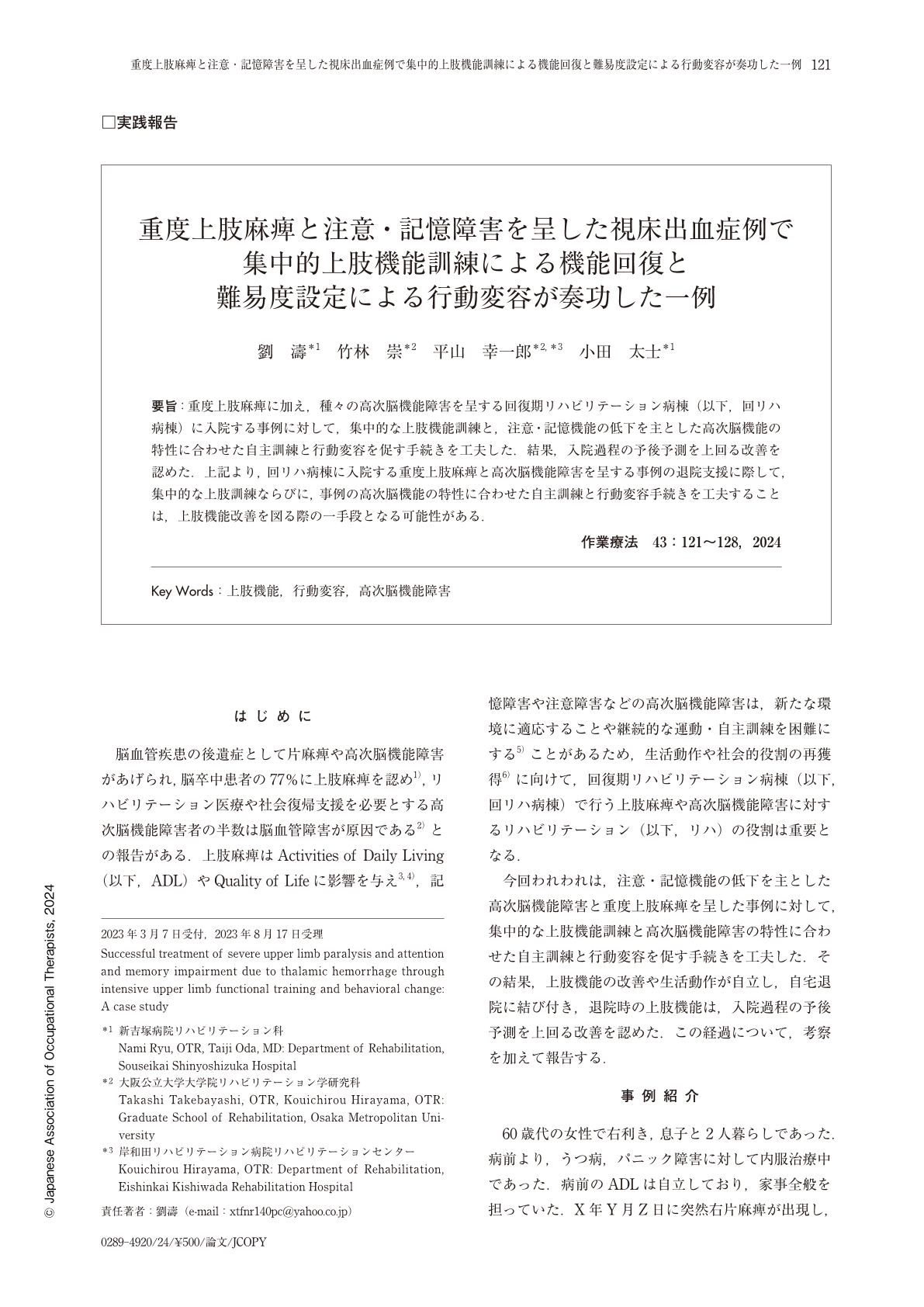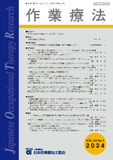Japanese
English
- 販売していません
- Abstract 文献概要
- 1ページ目 Look Inside
- 参考文献 Reference
要旨:重度上肢麻痺に加え,種々の高次脳機能障害を呈する回復期リハビリテーション病棟(以下,回リハ病棟)に入院する事例に対して,集中的な上肢機能訓練と,注意・記憶機能の低下を主とした高次脳機能の特性に合わせた自主訓練と行動変容を促す手続きを工夫した.結果,入院過程の予後予測を上回る改善を認めた.上記より,回リハ病棟に入院する重度上肢麻痺と高次脳機能障害を呈する事例の退院支援に際して,集中的な上肢訓練ならびに,事例の高次脳機能の特性に合わせた自主訓練と行動変容手続きを工夫することは,上肢機能改善を図る際の一手段となる可能性がある.
We devised procedures to promote intensive upper limb functional training, voluntary training, and behavioral change in accordance with the characteristics of higher brain functions, including attention and memory impairment, for a case admitted to a recovery rehabilitation ward with various higher brain dysfunctions in addition to severe upper limb paralysis. As a result, improvement exceeding the prognosis of the admission process was observed. This suggests that intensive upper limb training, voluntary training, and behavior change procedures tailored to the characteristics of the patient's higher brain function may be one way to improve upper limb function when supporting the discharge of patients with severe upper limb paralysis and higher brain dysfunction who are admitted to the Rehabilitation Unit.

Copyright © 2024, Japanese Association of Occupational Therapists. All rights reserved.


